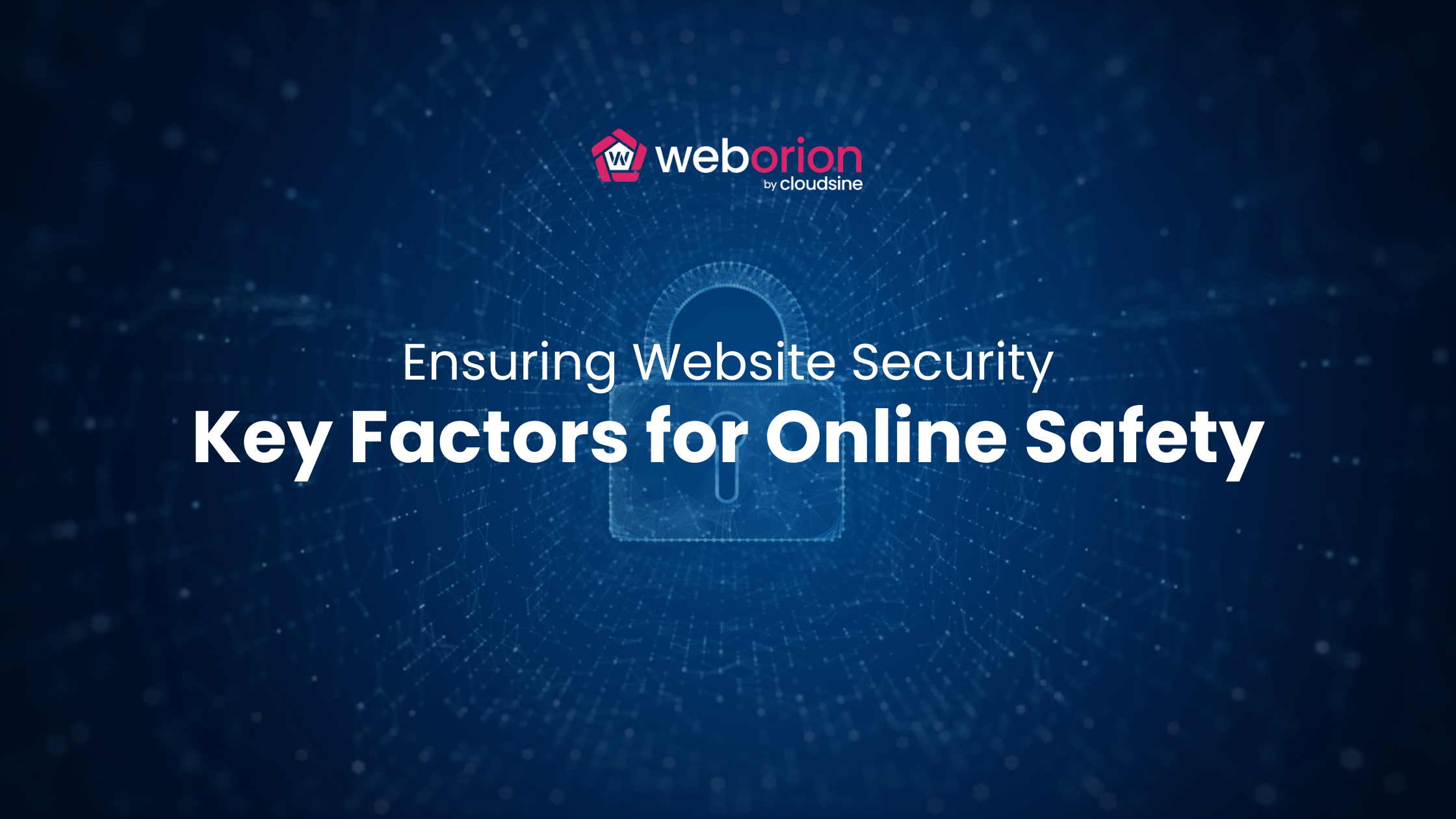
Website Security: Key Factors for Online Safety
In today’s digital landscape, the Internet is a vital hub for businesses and individuals. We conduct transactions, store sensitive information, and connect with the world through websites. However, this reliance on online platforms brings with it a crucial concern: website security.
Website security refers to the measures taken to protect a website from unauthorized access, malicious attacks, and data breaches. In an era where cyber threats are constantly evolving, ensuring a secure website is critical.
This blog delves into the key factors contributing to online safety, providing valuable insights for those who want to build and maintain a trustworthy online presence.
1. Robust Authentication Measures
Authentication is the gatekeeper of your website, ensuring that only authorized users gain access. Here are two key aspects to focus on:
Secure Password Policies
Employ stringent password requirements, including a mix of uppercase and lowercase letters, numbers, and special characters. Encourage regular password updates to reduce the risk of unauthorized access.
Multi-Factor Authentication (MFA)
Elevate your website security by implementing MFA. This adds an extra layer of protection, requiring users to provide multiple forms of identification before accessing sensitive areas.
2. Regular Updates and Patch Management
Keeping your website software up-to-date is crucial for safeguarding against vulnerabilities. Here are two vital considerations:
Timely Updates
Regularly update your website’s software, plugins, and frameworks. These updates often include security patches that address known vulnerabilities. Neglecting updates can leave your site exposed to exploitation.
Patch Management
Implement a robust patch management strategy. Promptly apply patches released by software providers to fix vulnerabilities.
3. Limit User Permissions
To strengthen your website’s security, it’s crucial to establish a robust authentication and access control system. Adhere to the principle of least privilege.
It is a fundamental security concept that dictates granting users only the minimum level of access necessary to perform their designated tasks. This minimizes the potential damage caused by compromised accounts or human error.
Imagine a website with various user roles, from administrators with full access to content editors with limited editing permissions. By employing the principle of least privilege, an editor’s account would not be able to delete entire sections of the website, even if compromised.
This approach significantly reduces the attack surface and the potential impact of a security breach. Here’s how to implement the principle of least privilege on your website:
- Granular Role-Based Access Control (RBAC): Define user roles with specific permissions tailored to their job functions.
- Regular Reviews and Audits: Regularly assess user access levels and ensure they are aligned with current needs.
Conclusion
Remember, security is not a one-time task but an ongoing commitment. Take charge of your website’s safety and empower it against the ever-growing challenges of the digital world.
Partner with WebOrion today for a resilient and secure online experience. Enhance your website’s defense with our Web Application Firewall, embrace continuous monitoring, and have a response solution in the event of an attack. Book a demo now to take the next step towards a more secure digital future.

